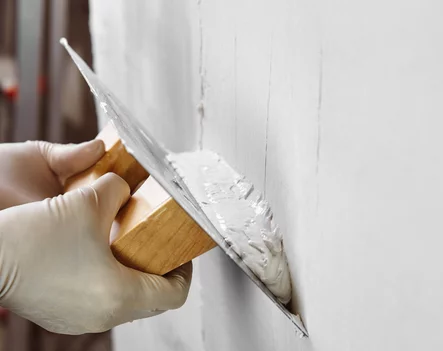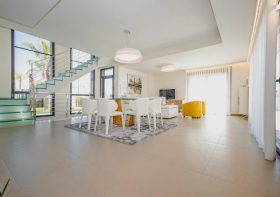WHAT IS GIB FIXING AND STOPPING

What is GIB Fixing? And what is GIB Stopping? What is GIB? GIB Fixing or Stopping is a common term in the world of Interior Plastering. These terms are used when you renovate your home, build a new house, do wall decoration and painting and other occasions. What do these terms really mean and how do the actually work?
This article will explain Gib stopping in Auckland and fixing in a simple manner.
What is GiB?
GIB Board is a type of lining panel with a cardboard face and a gypsum center for Gibraltar board. The gypsum is extruded with or without additives, and usually between thick sheets of backer and facer paper.
GiB board is mainly used in the construction and interior walls, as well as ceilings.
What is gib fixing?
If you were wondering, Gypsum (hydrated calcium sulfate) is a mineral that forms plasters of Paris when it’s calcined.
The Gibraltar Board is named after Gibraltar’s steadfast Rock. GiB was a brand name that belonged to a local manufacturer who dominated the Auckland market.
It was eventually used as a genericized mark in the country.
Why Use GIB Boards
What is GIB fixing? First, we must understand what a GIB?
Around the world, GiB is also known as drywall and plasterboard. This product is non-toxic and made of natural gypsum.
These plasterboards do not use fly ash (a derivative of coal extraction) as a bulk filler as it is environment-friendly, hence why it is considered the new standard of ceilings in Auckland.
GIB boards give you a higher quality finish. Not only is it cheaper than drywall, but also easier to install. It has become more readily available in Auckland over the past few years.
There are different types of GIB board to suit different purposes, such as fire-resistance or water-resistance. Other options include noise-resistance and impact-resistance. GiB boards have been hailed as one of the most important inventions in construction over the past century.
What is GiB fixing?
What is GIB fix? What is GIB fixing?
GIB Fixing is the process of installing GIB, or plasterboard, on a wall or ceiling. GiB fixers are the professionals who perform this installation, repair any damage, holes or dents and smooth out the ceilings or walls.
GIB Fixing is a key part of the process when you are renovating or building a home.
It is best to hire professionals who are experienced in GIB-fixing boards on walls and ceilings. This will give you the best finish possible for your decorating. Plasterboards are best attached with screws and glue. Use screws to attach the plasterboard around the perimeter and glue where it comes into contact with the battens.
How is GIB Fixing performed?
Installation of GIB can be a long process. You must prepare the substrate by making it as flat and smooth as possible, before you apply plasterboard.
You will then have to cut and attach the material according to your requirements. Plan the layout so that no end joints form.
Plasterboards are to be attached at right angles with the battens. These will then be at right angles with the trusses, joists and beams.
Start by applying glue daubs at the junction of the ceiling and wall. You can secure the sheets by inserting T-braces in between the junctions.
Screw the sheet into place by screwing the center of the sheet onto each batten, and then either edge. You will have to back-block if you can’t avoid the end joints. The final step in GIB fixation is back-blocking.
The back-blocking process is a way to reinforce the joints between the plasterboards by creating an artificial taper. Using adhesive, you will attach strips of plasterboard directly behind the joint to the back of GIB sheets. This guide will teach you more about GIB fixing.
What does GiB stop?
Another question that is often asked is ‘What exactly is GIB stopping?’
GIB Stopping can also be used in the installation of plasterboard, such as wall skimming and texture removal. GIB Stopping will ensure a smooth, sharp finish for your plasterboard ceilings and walls. The GIB board will be ready to decorate.
What is gib stopping
Using high-adhesive interior plaster, the first coats of the process are bed. Next, the subsequent coats will be applied to achieve the flattest contour possible.
To achieve a smooth finish, cover the joints with a GIB stopping material that can be sanded. Use a halogen high-powered light after sanding to finen the sand.
After painting, touch up any marks you may have missed. The supervisor should perform a second spot-check (or light check) to ensure that nothing has been missed.
Should you hire a professional to fix and stop your GIB?
Professionals should always be consulted for the GIB installation and stopping procedures. You can install the GIB yourself.
Professionals will always be on the lookout for certain things you may not even know about or have forgotten. You can, for example.
Professionals ensure that the craftsmanship they use matches your existing interior. They will also make sure that it is coordinated with other trades in a small space.
They will also reduce the use of cut or butt joints. All professionals who work in the industry are trained to follow this process and adhere to certain rules and criteria.
These will prevent joints from being placed in areas that move easily. They can be placed near doors, windows, the junction of rooms and hallways or stairwells.
If you want the best possible results, the entire process must be flawless from start to finish. Even though stopping can cover some minor imperfections and mistakes, a professional stopper will not be able to fully hide the errors from poor repair. It is therefore important to hire a professional right from the beginning.
You now know the basics of GIB Stopping or Fixing. You will now know how to correctly use the terms when installing plasterboards at home.




Leave a Reply